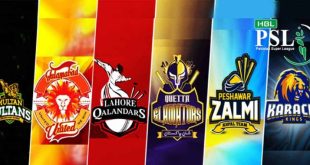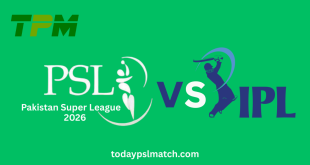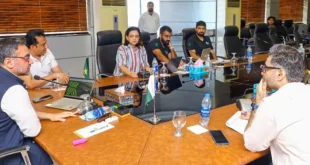From Dreams to Development: How Qalandars Are Reshaping Pakistan’s Cricket
Growing up in Lahore, I often passed by the Gaddafi Stadium, hearing the roar of the crowd and dreaming of one day playing under those lights. Years later, working in grassroots cricket development, I witnessed how the Lahore Qalandars, a once-ordinary franchise in the Pakistan Super League (PSL), transformed into something extraordinary, a cricketing movement that would soon redefine the landscape of sports in Pakistan.
Success Is Never Accidental in Professional Sports
Their story didn’t follow the usual script of overnight success. As someone closely observing local development models, I saw that their triumph was anything but accidental. It was earned through vision, persistence, and the kind of grit that most professional setups lack. In the world of professional sports, trophies aren’t just handed out; they’re fought for. And Lahore Qalandars had the belief to keep fighting.
PSL 10 – A Statement of Purpose, Not Just a Trophy
When they secured their third title in PSL 10, it wasn’t just a trophy win; it was a statement, a reflection of their long-standing, systematic commitment to player development. The truth is, they became the embodiment of what cricketing excellence looks like when you combine national pride with a clearly defined purpose.
Sikandar Raza’s Loyalty Became the Soul of PSL 10
I remember watching Sikandar Raza land in Lahore just hours before the PSL 10 final after a gruelling Test match between Zimbabwe and England. His journey from Birmingham, with no direct flight, straight to the toss at Gaddafi Stadium, was a heroic act of loyalty that became the emotional centrepiece of that finale. He didn’t just show up — he contributed to the win, inspiring fans, media, and even the support staff. The team had no head coach at the time. What they had instead was collective resolve, unity, and unmatched passion.
The Visionary Behind the Movement – Atif Rana
The credit for this cricketing institution goes to Atif Rana, the CEO and owner of the Qalandars. I had a brief chat with him at a development event, and what struck me was his sharp understanding of the Pakistan cricketing ecosystem. While other franchises were chasing expensive signings, he was steering his team with clarity toward long-term goals. His philosophy was clear: prioritize merit, not personalities, and build a structure from the grassroots up.
Player Development Programme – Uncovering Hidden Gems
His year-round initiatives, especially the Player Development Programme (PDP), have changed how we see talent. I’ve seen firsthand how boys from remote areas like Muzaffargarh, Swat, and Dera Ghazi Khan were scouted, trained, and mentored, many of whom were unknowns until the PDP trials. These cricketers weren’t judged by their background, province, or social standing. It was pure, merit-based, and that’s why we see names like Haris Rauf and Dilbar Hussain proudly representing Pakistan today.
Expanding Reach – 25 Cities, Boys and Girls Alike
The Qalandars have announced that trials will soon expand to 25 cities, including girls, under a partnership with the Prime Minister’s Youth Programme. These city-based teams will be given state-of-the-art resources, with registration available both online and at trial venues. It’s more than just a process — it’s a foundation for a transparent, self-sustaining cricket system.
From Cricketers to Creators – A Culture of Talent
Beyond cricket, Qalandars are investing in the next generation through initiatives like Friends of Qalandars, where youth can showcase skills in singing, acting, painting, or even digital content creation. I met a young boy from Karachi during one PDP camp who later got shortlisted for a media production scholarship through their extended platform. This is how you build culture, not just a team.
Sports Diplomacy in Action – Building Global Trust
Even on the global front, they’re active. When Natalie A. Baker, Chargé d’Affaires at the US Embassy in Islamabad, joined the Qalandars at their PSL matches in Rawalpindi and Lahore, it was more than a gesture — it was a moment of international goodwill. She helped distribute team shirts among fans, calling Pakistan a safe and welcoming place for international sports. She’ll even join them on their trophy tour in the United States, strengthening sports diplomacy and building people-to-people ties between Pakistan and the US.
Lessons for PCB – A Model Worth Emulating
As PSL moves toward 2026, other institutions like the Pakistan Cricket Board (PCB) could learn from the Qalandars’ model. Their systematic, community-focused, and sustainable strategies offer a ready template for domestic cricket reform, especially if the PDP gets embedded into regional academies and national high-performance centres. Leveraging Atif Rana’s expertise in development planning could be a game-changer.
More Than a Team – A Symbol of National Hope
Because the Lahore Qalandars are not just a cricket team anymore, they’re a symbol of resilience, hope, and innovation. They’ve built structured talent pathways, encouraged inclusive fan engagement, and lifted far more than just trophies — they’ve helped transform Pakistan cricket and inspired the aspirational youth of this country who now believe that their life can change through this game.





